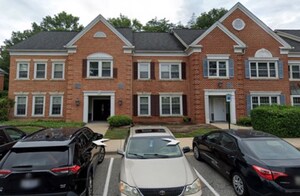Adaptive Reuse to Drive Distressed Investing in 2024 and Beyond
Office, retail and education conversions hold the most promise, but investors will need creativity and patience to maximize ROI, advises A&G's Christian Koulichkov
NEW YORK, May 8, 2024 /PRNewswire/ -- Distressed investing will be a prime focus in commercial real estate in 2024 and beyond, with the office market continuing as the largest source of stress, advised a real estate sales veteran from A&G Real Estate Partners.
Writing in the Turnaround Management Association's Journal of Corporate Renewal, A&G Real Estate Sales Managing Director Christian Koulichkov points to buying opportunities in office, multifamily, mixed-use, and hospitality properties due to a "perfect storm of maturities, increased borrowing costs, tighter lending standards, and reduced cash flow."
In his Featured Article for JCR's May issue ("Adapt & Thrive: Innovative Strategies to Overcome Real Estate Distress"), Koulichkov notes that properties all over the United States are in a pickle as a result of pre-Covid business decisions.
"Imagine a borrower that bought an underperforming mid-size office building in a top 20 market in 2019 with plans to reposition the asset to attract new higher-paying tenants by changing floor plate layouts and adding tenant amenities to boost rents," he writes. "The game plan would call for a high-leverage 5-year interest-only loan with the goal of refinancing the debt long term when the note came due in 2024 based on the increased occupancy, rent rolls, and a higher valuation. Post pandemic, that borrower is struggling to fill the space with the desired tenancy, and their loan is underwater making a traditional refinance impossible."
While today's investors have "enough dry powder to fill the back bowls of Aspen, Sun Valley, and Jackson Hole multiple times over," Koulichkov continues, in many cases, their best option will be adaptive reuse—conversion projects that are "not always linear and can require community buy-in, a rezoning process, and a capital base that will allow for reasonable timelines."
For example, public-private partnerships and rezonings are essential to making proformas pencil out in office-to-residential conversions, writes Koulichkov, who boasts more than a decade of experience in selling assets in and out of bankruptcy.
The executive cites the successful conversion of a 525,000-square-foot, 1970s-era office building at 160 Water Street in New York City's Seaport into 588 residential units. An opportunistic investment firm "purchased the building in 2022 for $272 million," he explains. "At $518 per square foot, this price is heavily discounted versus replacement cost and an example of an adaptive use triumph."
In retail real estate, reuse opportunities include backfilling vacant anchor spaces with the likes pickleball courts, self-storage facilities, daycare/early education centers or residential buildings.
Meanwhile, higher education faces a demographic cliff and is in a serious economic predicament. "These failing institutions are the next big land grab in the U.S. because many of them sit on prime property in major metropolitan areas," Koulichkov notes.
Two recent A&G deals in New York illustrate the potential for adaptive use to benefit this sector. Koulichkov points to The College of New Rochelle, which sold in bankruptcy and was converted by the Freemasons into senior housing, community space and a TV/film set, and Cazenovia College in New York, which now houses an auxiliary academy for the state police.
In the piece, he observes that regional banks exposed to Class B and C office and multifamily loans are now struggling to stay within FDIC regulated thresholds and that the maturity wave also will affect the CMBS market, adding to commercial real estate distress.
"The smart money has been building a war chest and waiting for the maturity tsunami to flood the market with opportunity," Koulichkov writes. "The amount of capital chasing these deals will be fierce and unprecedented."
In this environment, the right move might just be to convert a college campus into senior housing, an overlooked office building into downtown apartments, or a former Bed Bath & Beyond into pickleball courts. "These imaginative solutions," Koulichkov concludes, "can provide the distressed investor with a valuable edge" in producing higher cash-on-cash yields.
The full article is available at:
https://turnaround.org/jcr/2024/05/adapt-thrive-innovative-strategies-overcome-real-estate-distress
Media Contacts: At Jaffe Communications, Elisa Krantz, (908) 789-0700, [email protected]
SOURCE A&G Real Estate Partners

WANT YOUR COMPANY'S NEWS FEATURED ON PRNEWSWIRE.COM?
Newsrooms &
Influencers
Digital Media
Outlets
Journalists
Opted In





Share this article